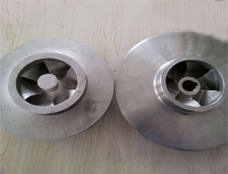+86 311 85258258
+86 311 85258258
Jul. 21, 2021
How To Choose The Right Impeller
No matter what you are mixing, the choice of the impeller is crucial. It plays an important role in mixer specifications and final products. Disperser blades, propellers, hydrofoils, and other common impeller designs make a confusing choice.
Can this diffuser blade give me the off-bottom suspension I need? What is the difference between a hydrofoil and a propeller? What is a hydrofoil? Before buying an impeller, you need to consider several aspects of your product and process:
Process and product considerations
The choice of the impeller is usually based on finding a balance between flow pattern, shear, and pumping capacity that suits your specific application. How do you know what balance you need to strike between the two? It depends on factors such as the desired result, the properties of the ingredients, and the geometry of the vessel.
Properties of the ingredients
Is the liquid used in your application miscible or immiscible? How viscous is the liquid? Does the solid you are mixing in have a tendency to agglomerate? The process of mixing miscible liquids usually does not require a high-shear impeller, because mixing is mainly driven by the flow of liquid. In this case, it is best to use radial or axial flow impellers, according to your process requirements. The impeller is specially designed to be more effective at certain viscosities.

Impeller
Desired result
If the ultimate goal is simply to mix soluble solids and liquids, then propellers or hydrofoils can do the job. However, if the ultimate goal is to suspend insoluble matter into the liquid, a high-shear impeller is required. If you want to disperse the gas throughout the mixture, you will need a dispersing blade or another high shear impeller.
Vessel geometry
Most mixing tanks are designed in a cylindrical shape, with the agitator going down from the top of the tank, and the impeller located near the bottom of the tank. The diameter of the impeller is usually configured for specific applications, but theoretically, the diameter of the impeller should be approximately the same as the distance from the bottom of the impeller to the bottom of the tank.
The baffle also plays an important role in the geometry of the tank. Does the tank have baffles? Does the tank have 3 or 4 baffles? Baffles can greatly improve the efficiency and effectiveness of the mixer because they help create an axial flow pattern in the tank. Avoiding solid body rotation is an important part of impeller selection and tank geometry, and baffles can help with this.
We are impeller suppliers. Please feel free to contact us if you are interested in our products.